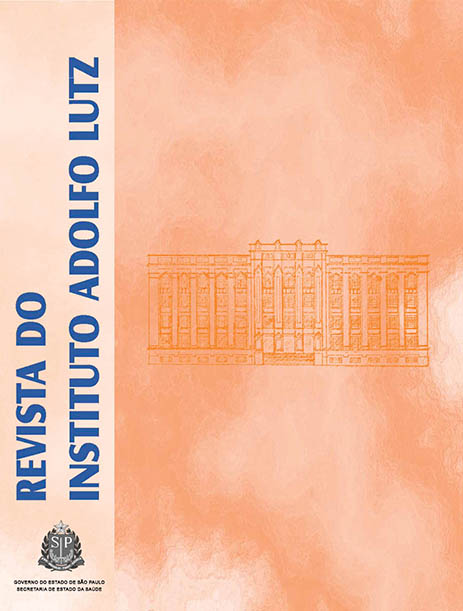Abstract
The human beings require the protein sources for their organisms, which usually are provided by animal origin. For this purpose, the consumption of wild animal meat has been an option, usually at rural regions. Lately, the consumption of these types of meat has been increasing by people living in urban centers, including the turtle meat. Nevertheless, there is no records on the quality of the meat of turtles bred in captivity conditions. Thus, an experiment was carried out in a joint work with CENAQUA (Centro Nacional de Quelônios do Amazonas – National Center for Amazonian Chelonian) and Pro-fauna (Iguape – São Paulo) with the objective to study the meat quality of Amazon turtle bred in captivity. The study was performed in two groups of animals (seven female and seven male). The turtle meat had the similar coloration to chicken meat. Protein contents ranged from 16.68 to 18.02%, lipid contents from 2.61 to 1.88%, cholesterol amount from 49.86 to 50.71 mg/100g, caloric value from 88.92 to 89.30 Kcal/100g, for females and males, respectively. The turtle meat was rich in fat acids (oleic and arachidonic acid), as well as in calcium, phosphate and potassium contents.
References
1. Storer TI, Usinger R. Zoologia Geral. 5a ed. São Paulo: Companhia Editora Nacional; 1979. 230p.
2. Freiberg, MA. Turtles of South America. Neptune City: TFH Publications; 1981. 780p.
3. Pritchard PCH, Trebbau P. The turtles of Venezuela. Oxford: Society of the Study of Anplibians and Reptiles, 1984. p. 43-57.
4. Brasil. Ministério da Agricultura. Secretaria Nacional de Defesa Agropecuária. Instrução Normativa nº 20, de 21 de julho1999. Métodos analíticos físico-químicos para controle de produtos cárneos e seus ingredientes – sal e salmoura. Diário Ofi cial [da] República Federativa do Brasil. Brasília, DF, 1999.
5. Bligh EG, Dyer WJ. A rapid method of total lipid extraction and purifi cation. Canadian Journal Biochemistry and Physiology, 1959. 57:59-65.
6. Brasil. Ministério da Saúde. Agência Nacional de Vigilância Sanitária (ANVISA) RDC nº 360, de 23 de dezembro de 2003. Aprova Regulamento Técnico sobre Rotulagem Nutricional de Alimentos Embalados, tornando obrigatória a rotulagem nutricional. Diário Ofi cial [da] República Federativa do Brasil. Brasília, DF, 2003.
7. Hartman L, Lago RCA. Rapid preparation of fatty acid methyl esters from lipids. Laboratory Practic, 1973. 22(6):475-79.
8. Kovacs MIP, Andersos WE Ackman RG. A simple method for the determination of cholesterol and some plant sterols in fi shery-based food products. Journal Food Science, 1979. 44:1299-305.
9. Nishikawa, AM. Preparação de amostras de produtos cárneos e pescado para análises de metais. Anais do IV Encontro Nacional sobre Contaminantes Inorgânicos, 1994. 46-
10. Sisvar 4.3. 2003. Disponível em: http://www.dex.ufl a.br/danielff/sisvar>. Acesso em 10/01/2006.
11. Luz VLF, Stringhini JH, Bataus YS L, Fernandes ES, Paula WA, Novais MN, Reis IJ. Rendimento e composição química de carcaça da tartaruga-da-Amazônia (Podocnemis expansa) em sistema comercial. Revista Brasileira de Zootecnia, 2003. 32(1):1-9.
12. Gaspar A, Rangel-Filho FB. Utilização de carne de tartarugas da Amazônia (Podocnemis expansa), criadas em cativeiro, para consumo humano. Higiene Alimentar, 2001. 89(5):73-8
13. Alian AM, Sallam YI, Dessouki TM, Atia AM. Evaluation and utilization of turtle meat: Physical and chemical properties of turtle meat. Egyptian Journal. Food Science, 1986. 14(2):341-50.
14. Ruiter A. El pescado y los productos derivados de la pesca: Composición, propriedades nutritivas y estabilidad. Zaragoza, Espanha: Ed. Acribia S.A. 1999. 416p.
15. Challiol J, Guerere M, Bonnet B, Pajaniaye A. Les lipids de la tortue verte Chlonia mydas: Comparación entre animaux sauvages et animaux d’élevage. Ann. Fals. Exp. Chim. 1983. 76(818):237-44.
16. Vianni R, Braz-Filho R. Ácidos graxos naturais: Importância e ocorrência em alimentos. Química Nova, 1996. 19(4):400 –7.
17. Schaefer EJ, Brousseau ME. Diet, lipoproteins, and coronary heart disease.Endocrin Metab Clin North American, 1998. 27:711-32.
18. Sinclair AJ. Dietery fat and cardiovascular disease: the signifi cance of recent developments for the food industry. Food Australia, 1993. 45(5):226-31.
19. Grundy SM. Comparison of monounsatured fatty acids and carbohydrates for lowering plasma cholesterol. New England Journal Medicine, 1986. 314:745-8.
20. Uauy R, Mena P, Valenzuela A. Essential fatty acids as determinants of lipids requeriments in infants, children and adults. European Journal Clinical Nutrition, 1999. 53(l.1):66-7.
21. Nair PGV, Gopakumar K. Fatty acid compositions of 15 species of fi sh from tropical waters. Journal. Food Science. 1978. 43:1162-4.
22. Ogawa M, Maia EL. Manual de pesca. Ciência e tecnologia do pescado. V. I, São Paulo: Ed. Varela, 1999. 430p.
23. USDA - United States Departament of Agriculture. Composition of food: Poultry Products, Washington DC: USA: Agriculture Handbook, 1979. 8:5 – 8.
24. Mc Carron DA, Morris CD, Cole C. Dietary calcium and human hypertension. Science, 1982. 217:267 ̄9.
25. Griffith L, Guyatt GH, Cook, RJ Bucher HC, Cook D J. The infl uence of dietary and nondietary calcium supplementation on blood pressure: an updated metaanalysis of randomized clinical trials. American Journal Hypertens, 1999. 12:84 ̄92.
26. Food and Nutrition Board. Recommended Dietary Allowances, 10th ed., Washington, D.C: National Academy Press, 1989. 230p.
27. American Heart Association - AHA. Heart and Stroke Statistical Update, American Heart Association, Dallas, 2000. 135 p.
28. Sandstead HH. Causes of iron and zinc defi ciencies and their effects on brain. Journal Nutrition, 2000. 130:347-9.
29. El Hendy HA, Yousef MI, El-Naga NIA. Effect of dietary zinc defi ciency on hematological and biochemical parameters and concentrations of zinc, copper, and iron in growing rats. Toxicology, 2001. 167(2):163-70.
30. Preziosi P, Prual A, Pilar G, Daouda H, Boureima H, Hercberg S. Effect of iron supplementation on the iron status of pregnant women: consequences for newborns. American Journal Clinical Nutrition, 1997. 66:1178 ̄82.

This work is licensed under a Creative Commons Attribution 4.0 International License.
Copyright (c) 2009 Instituto Adolfo Lutz Journal
